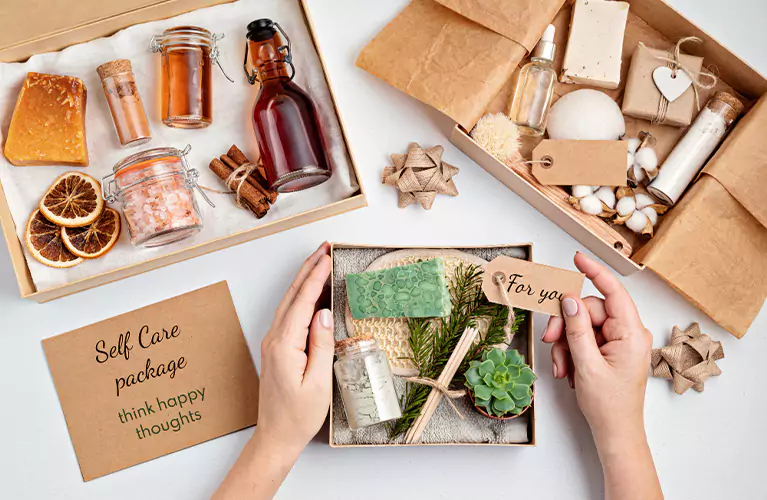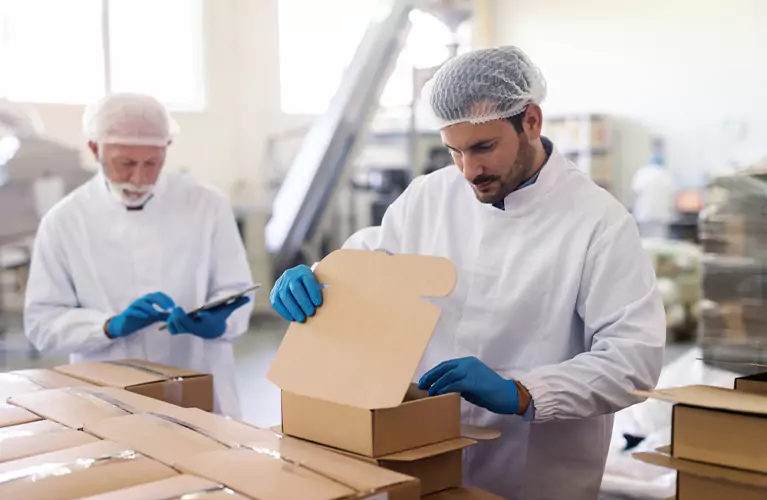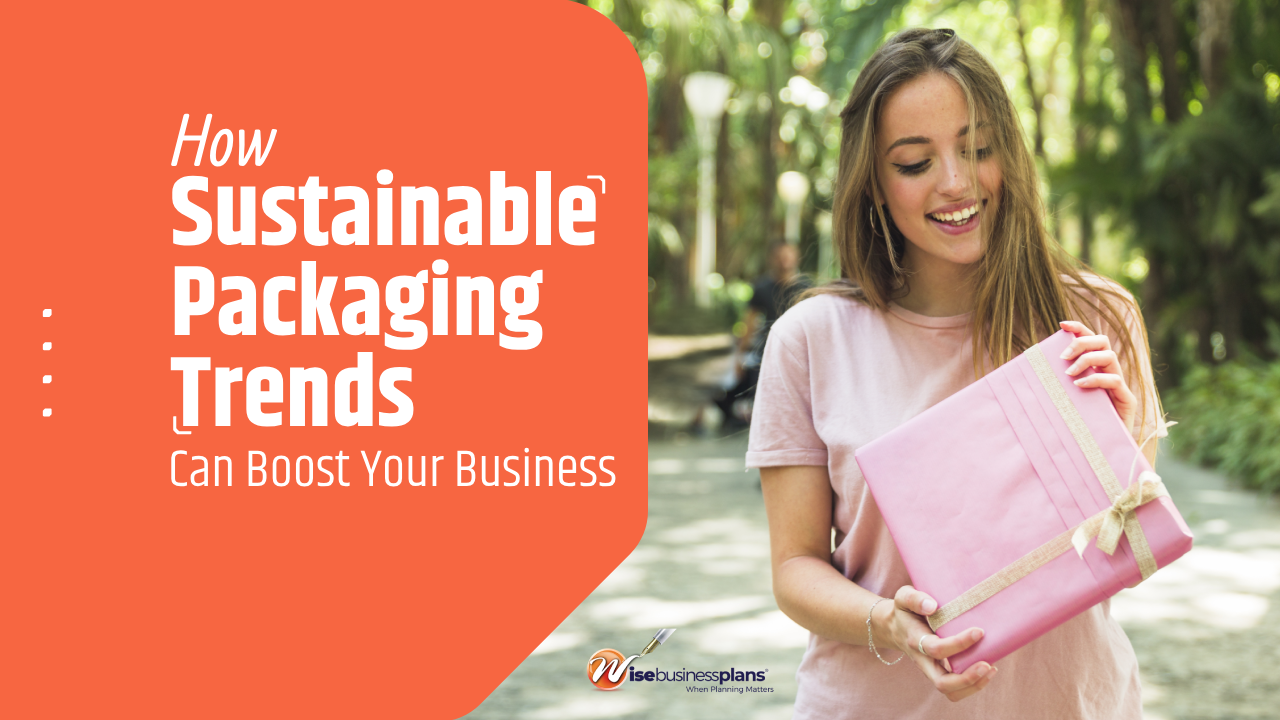How Sustainable Packaging Trends Can Boost Your Business: A Guide for Entrepreneurs
Table of Contents
- What is Sustainable Packaging?
- 12 Sustainable Packaging Trends for Businesses to Grow
- Recycled Materials
- Plant-Based Plastics
- Compostable Packaging
- Edible Packaging
- Water-Soluble Packaging
- Smart Packaging
- Minimalist Packaging
- Reusable Packaging
- Biodegradable Inks and Coatings
- Mushroom Packaging
- Flexible Packaging
- Upcycled Packaging
- Optimizing Packaging for Customer Convenience and Sustainability
- Conclusion
As an entrepreneur, you’re always looking for ways to make your brand stand out and grow. One of the most powerful—and increasingly important—ways to do this is by embracing sustainable packaging. In today’s market, consumers care more than ever about the environment, and they’re looking to support brands that share their values. By adopting eco-friendly packaging, you’re not only helping the planet, but you’re also setting your business up for long-term success.
Sustainable packaging isn’t just a passing trend—it’s a smart move that can boost your reputation, build trust with customers, and even save you money in the long run. In this guide, we’ll explore how these packaging innovations can help you grow your business, win loyal customers, and stand out in an increasingly competitive market.
Let’s dive into the top sustainable packaging trends that can help your brand thrive!
What is Sustainable Packaging?

Sustainable packaging refers to using materials that reduce environmental harm at every stage of a product’s life cycle. This includes using recyclable, biodegradable, compostable, renewable, and reusable materials. Making the switch to sustainable packaging not only helps the environment, but it also improves your brand’s image and appeals to a growing base of environmentally-conscious consumers.
By shifting to sustainable packaging, you position your business as a responsible brand, aligned with the values of today’s eco-aware market. Plus, you can potentially reduce your long-term production costs while gaining customer loyalty. Adopting sustainable packaging should be part of your strategic plan; our business plan writers can help incorporate these trends effectively.
12 Sustainable Packaging Trends for Businesses to Grow
If you want your brand to stand out, embracing these sustainable packaging trends can give you the upper hand. Let’s dive into 12 innovative trends that can drive your business forward while making a positive environmental impact.
Recycled Materials
Using recycled materials—like paper, plastic, or glass—helps reduce the need for virgin resources. Many companies are now opting for packaging made from post-consumer recycled (PCR) plastics, aluminum, and paper.
Why It Works for You: Recycled materials can often be more affordable than virgin resources, so you’ll save on production costs. Plus, consumers love to support businesses that prioritize sustainability, which can translate to greater customer trust and loyalty.
Example: Many online retailers now use recycled cardboard boxes, which not only cut costs but also appeal to customers who value eco-friendly packaging.
Plant-Based Plastics
Bioplastics made from renewable resources, like corn or sugarcane, are compostable and biodegradable, making them an eco-friendly alternative to petroleum-based plastics.
Why It Works for You: Plant-based plastics can help improve your brand’s environmental impact while offering consumers an attractive, sustainable option.
Example: Brands like Nestlé and PepsiCo are switching to plant-based plastics for their packaging to reduce their carbon footprint.
Compostable Packaging
Compostable packaging naturally breaks down into non-toxic components when exposed to heat, moisture, and microorganisms, making it an ideal solution for eco-conscious consumers.
Why It Supports Sustainability: Compostable materials leave no waste behind and help divert waste from landfills.
Example: Whole Foods uses compostable packaging for its prepared foods, contributing to a waste-free environment.
Edible Packaging
Made from materials like seaweed, edible packaging can be consumed, thus eliminating waste after use. This innovative approach is gaining popularity in the food industry.
Why It Enhances Your Brand: Edible packaging provides a unique solution to waste management and can create consumer excitement.
Example: Loliware’s edible cups made from seaweed are a prime example of a sustainable and edible packaging alternative.
Looking to Integrate Packaging Sustainability into Your Business Plan? Hire our expert business plan writer now!
Water-Soluble Packaging
This type of packaging dissolves in water, making it ideal for single-use products like laundry pods, reducing the amount of plastic waste produced.
Why It Drives Efficiency: Water-soluble packaging helps reduce plastic waste while being functional and cost-effective.
Example: Brands like Method and Procter & Gamble are utilizing water-soluble packaging for laundry pods to cut down on waste.
Smart Packaging
Smart packaging integrates technologies such as QR codes and RFID tags, allowing consumers to interact with packaging and gain product sustainability details.
Why It Builds Trust: Transparency through smart packaging helps create a direct connection with consumers and promotes sustainable practices.
Example: Coca-Cola’s use of QR codes on packaging to educate customers about recycling programs.
Minimalist Packaging
Minimalist packaging reduces material usage by focusing on simplicity and functionality. This type of packaging often uses recyclable materials and avoids excess layers or unnecessary design elements.
Why It’s the Future: Minimalist packaging helps reduce production costs and appeals to the growing number of eco-conscious consumers.
Example: Everlane’s use of simple, recyclable paper packaging for its clothing line promotes a minimalist and sustainable approach.
Reusable Packaging
Reusable packaging is designed to be used multiple times, which supports a circular economy. Examples include refillable containers or packaging designed for reuse in daily life.
Why It Adds Value: Reusable packaging encourages customer loyalty through initiatives such as refill programs, which help reduce packaging waste.
Example: Terracycle’s Loop program provides customers with refillable packaging for personal care and household products.
Checkout our free business plan examples now!
Biodegradable Inks and Coatings
Inks and coatings made from renewable, biodegradable resources reduce the environmental impact of packaging and increase recyclability.
Why It’s Effective: Using biodegradable inks and coatings ensures that the packaging is not only eco-friendly but also easily recyclable.
Example: Tom’s of Maine uses biodegradable soy-based inks for labeling, further supporting their sustainability goals.
Mushroom Packaging
Made from mycelium, this type of packaging is biodegradable and serves as a natural alternative to plastic packaging.
Why It’s Innovative: Mushroom packaging reduces reliance on foam and plastic, offering a sustainable solution with minimal environmental impact.
Example: Dell has adopted mushroom packaging to replace traditional foam for protecting electronics during shipping.
Flexible Packaging
Flexible packaging is lightweight, cost-effective, and can often be made from recyclable materials, reducing the overall amount of waste produced.
Why It’s Efficient: Flexible packaging is easier to transport, reduces shipping costs, and uses less material, resulting in lower carbon footprints.
Example: Snack brands like Nature Valley use flexible, recyclable pouches for their products to reduce waste.
Upcycled Packaging
Upcycled packaging is made from waste materials such as ocean plastic or discarded fabric, providing a new life to materials that would otherwise go to waste.
Why It’s Profitable: Upcycled materials offer a unique way to market your brand as eco-friendly, attracting consumers who value sustainability.
Example: Patagonia uses recycled ocean plastic for its packaging to reduce environmental impact while promoting sustainability.
Optimizing Packaging for Customer Convenience and Sustainability

As you embrace sustainable packaging, it’s important to also consider how it enhances the customer experience. Simple, efficient features like address labels help streamline returns by eliminating the need for customers to search for return addresses, improving convenience and reducing friction.
In addition, reusable packaging and clear recycling instructions make it easier for customers to engage with your brand in a sustainable way. When packaging is both eco-friendly and user-friendly, it fosters customer loyalty, boosts satisfaction, and strengthens your brand’s reputation.
Efficient and convenient packaging not only reduces your environmental footprint, but it also provides tangible benefits for your business. By focusing on customer-friendly features, you can create lasting customer relationships, encourage repeat purchases, and ensure long-term success.
Conclusion
Embracing sustainable packaging is a smart, strategic move for entrepreneurs. From recycled materials to plant-based plastics and upcycled packaging, these eco-friendly trends can reduce your environmental impact, lower costs, and boost your brand’s reputation.
As consumers prioritize sustainability, adopting these packaging solutions helps you attract loyal customers and set your business apart in a competitive market. By focusing on both efficiency and sustainability, you can foster long-term growth and ensure your brand stays ahead of the curve.
The future of packaging is green—make it a key part of your business strategy and thrive in the evolving marketplace.

